Tuesday, April 17, 2018 From rOpenSci (https://ropensci.org/blog/2018/04/17/author-survey/). Except where otherwise noted, content on this site is licensed under the CC-BY license.
rOpenSci’s package review system (aka onboarding) is one of our key activities to improve quality and sustainability of scientific R packages. The editorial team are constantly working towards improving the experience for both authors and reviewers. After our first year, we surveyed authors and reviewers who participated in our onboarding process to help us better understand what’s working well and where there is room for improvement. At the end of last year, we did so again, re-designing our survey so as to better track participant opinions year-to-year. In this post we summarize the 45 responses that we received and what we’re doing to address your feedback.
🔗 Section 1: Satisfaction with the review and onboarding process
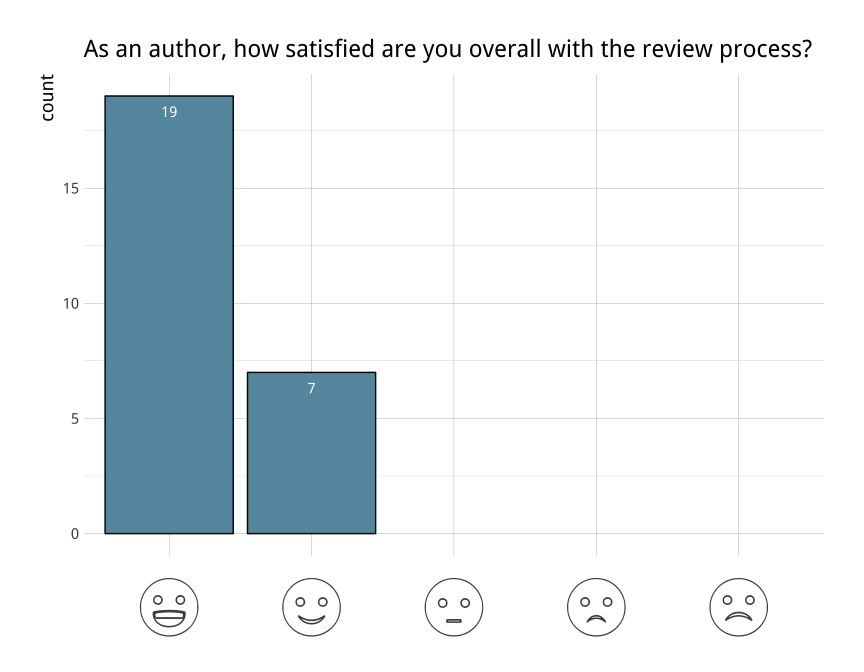
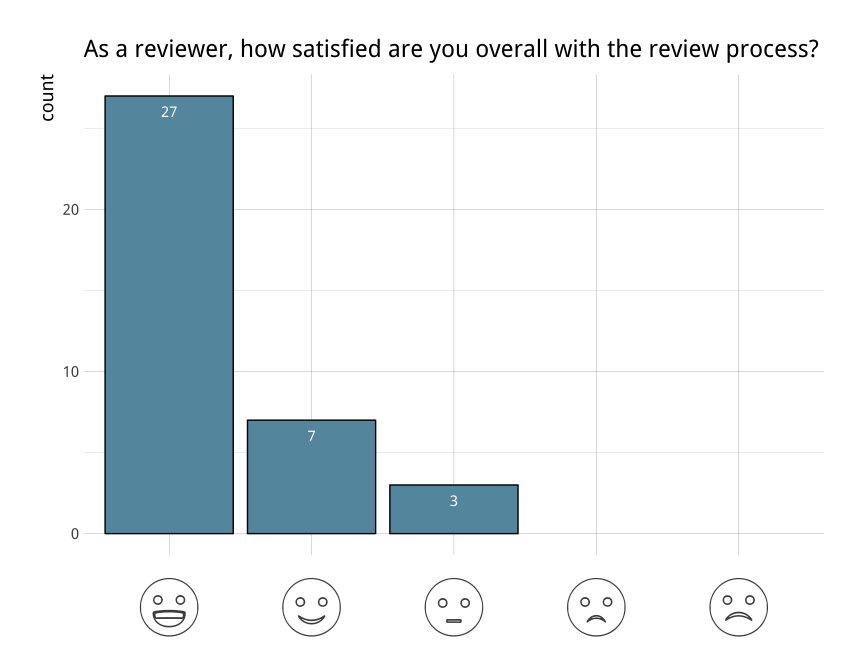
We’re glad to see high levels of overall satisfaction with the onboarding process. We primarily ask this question to establish a baseline to compare year-to-year, and hope that we can maintain high satisfaction as we continue to grow.
🔗 Section 2: Guidelines for authors and reviewers
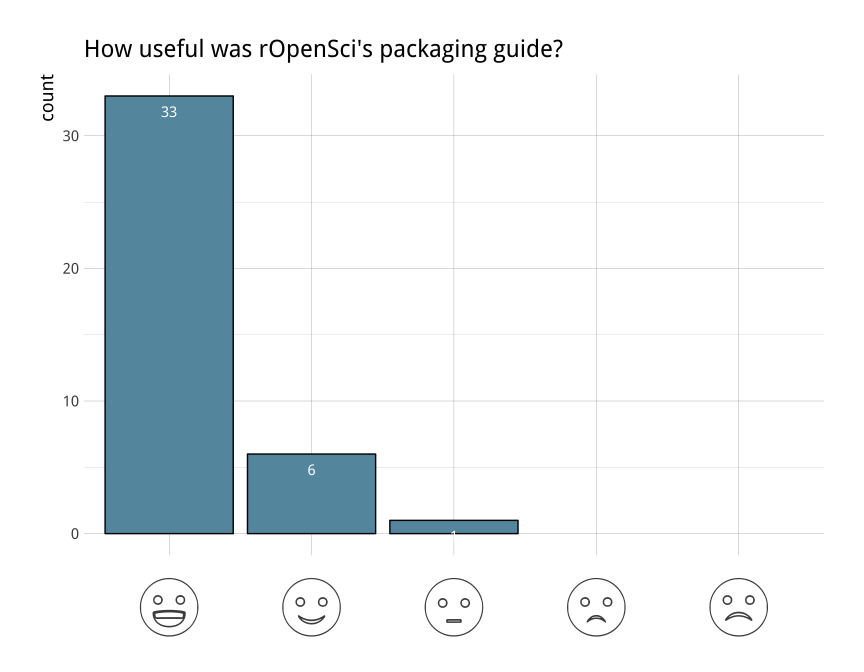
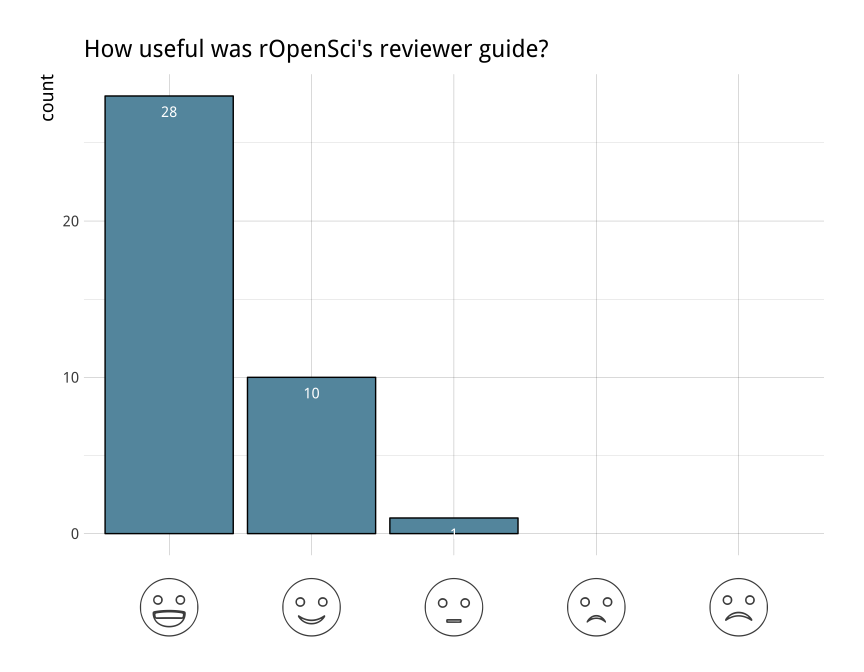
We provide packaging and reviewing guides for our authors and reviewers to consult before and during the peer-review process. While both were highly rated, enthusiasm was greater for the packaging guide than the reviewing guide.
For the packaging guide, authors gave feedback that they could be better organized, including a suggestion that the collection of markdown files be converted to a bookdown website for easier navigation. We thought this was a great suggestion, and have begun the process of porting all our documentation for packaging and reviewing, into a common bookdown book. Editor Maëlle Salmon is leading this work, and you can find the in-progress book, rOpenSci Packages: Development, Maintenance, and Peer Review.
We also got feedback from authors that they wanted guidance on how best to acknowledge the efforts of reviewers. This was one of our drivers to get reviewers recognized as MARC author type in package DESCRIPTION files, which you can read more about in in this previous blog post.
For the reviewing guide, reviewers suggested greater structure, including separation between code and UI reviewing, more advice and examples on how to approach review, better guidance on expectations for timelines and collaboration between multiple reviewers. We aim to fold all these suggestions into the book. There are great posts about how to tackle a peer review on our blog that we will incorporate.
🔗 Section 3: The review process
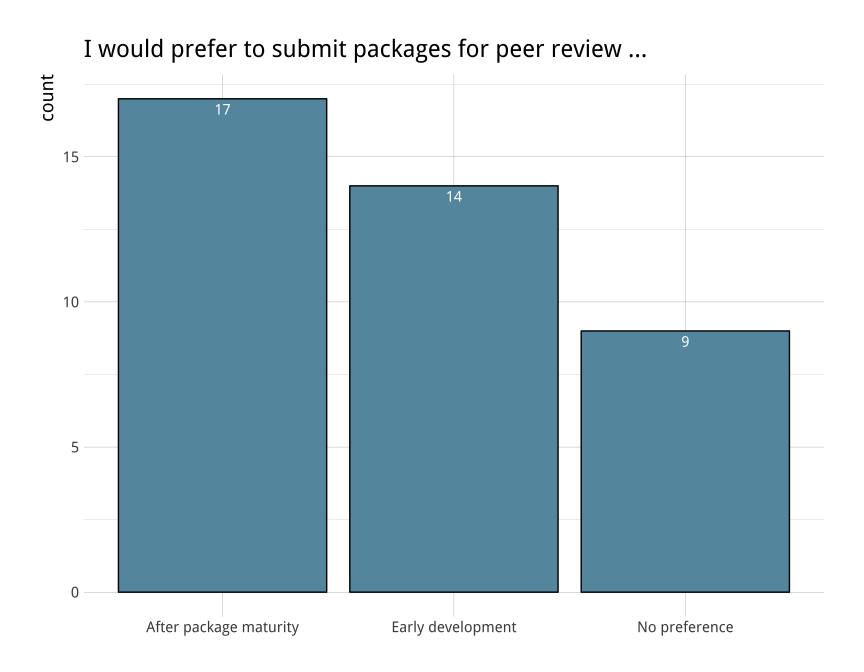
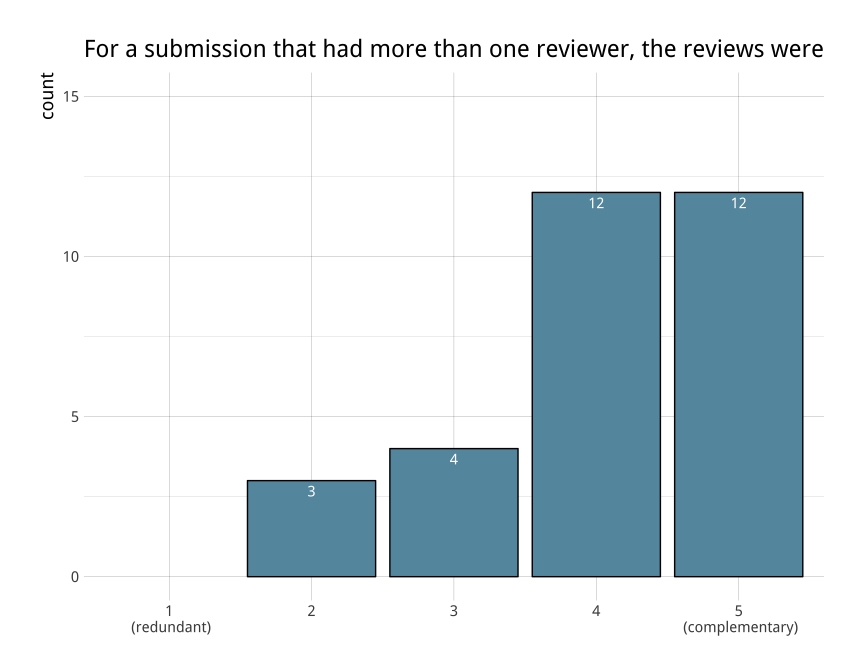
This was perhaps the most controversial topic in the responses. Both authors and reviewers were conflicted about the best time to submit for review. Submitting early in development could allow reviewers to provide concrete feedback on software design and usability, but it is generally hard to review incomplete software. On the other extreme, software that is mature and already on CRAN may not be able to implement reviewer suggestions, especially if it would result in breaking changes for users. One suggestion was to consider packages in both stages and provide short (less than one hour of review) for early stage packages and reserve the more detailed reviews for the mature packages.
This has been a perennial tension in the review process. A similar split came up in our previous survey, and Miles McBain recently wrote about it in his blog post about reviewing bowerbird. As we don’t see a strong net pull in either direction, we don’t plan to change submission requirements, and we’re worried that a multi-step process would make too much work for reviewers. One useful suggestion, though, is for authors of early-development packages to open discussions on our forum to solicit early input.
Some respondents noted the challenge of providing an objective review under a fully open system, and one suggestion was to consider a single blinded system in order to allow reviewers (especially more early career folks) to provide critical comments without fear of retaliation.
🔗 Automated checking
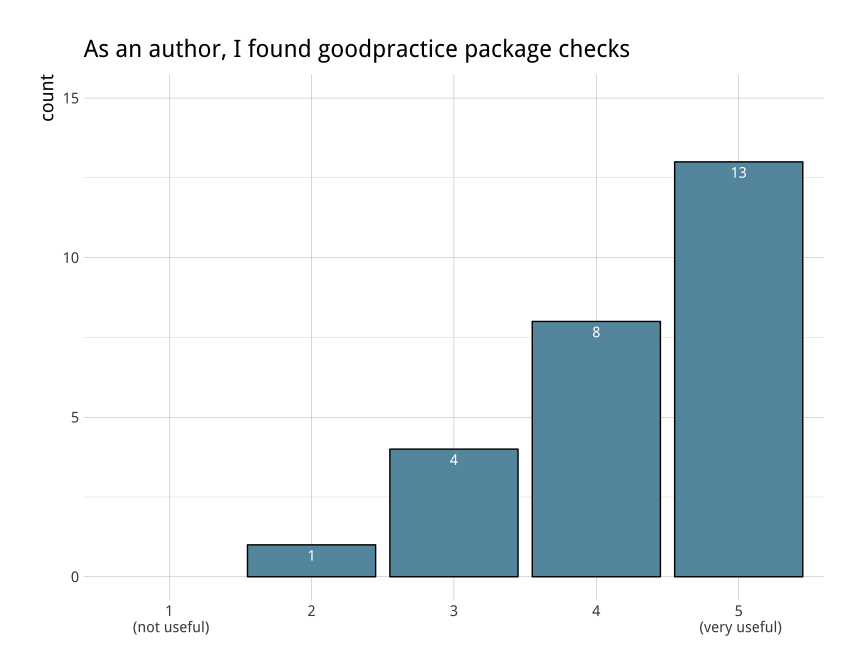
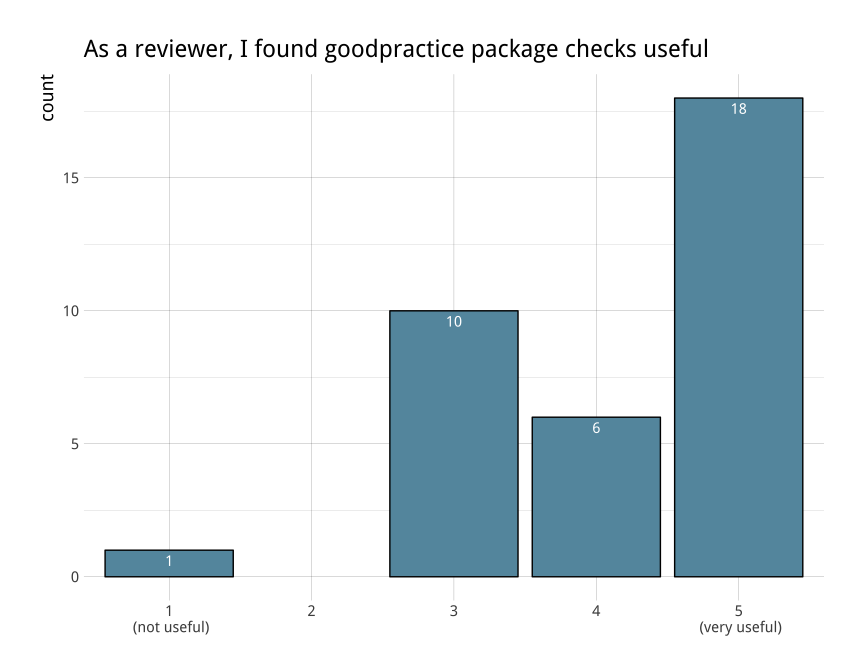
We received specific feedback about our use of the goodpractice package to provide automated checks of some package quality issues. Respondents suggested that authors should pre-run these checks before submitting, and also to provide better guidance as to which outputs can be ignored. We’re adding both suggestions to the new bookdown book.
There were also suggestions for improvement of goodpractice itself. goodpractice was created by Gábor Csárdi and is maintained by Mango Solutions. Thankfully Mango data scientist Hannah Frick has undertaken a project to improve the package and its documentation in recent weeks, and is incorporating suggestions we’ve passed on from the rOpenSci survey.
As goodpractice allows users to ignore some checks and add custom checks, we also aim this year to have a specialized set of rOpenSci checks that will align better align with our packaging guide. Finally, we hope to have these checks run automatically upon submission, reducing effort for both authors and editors.
🔗 Section 4: Value of software review
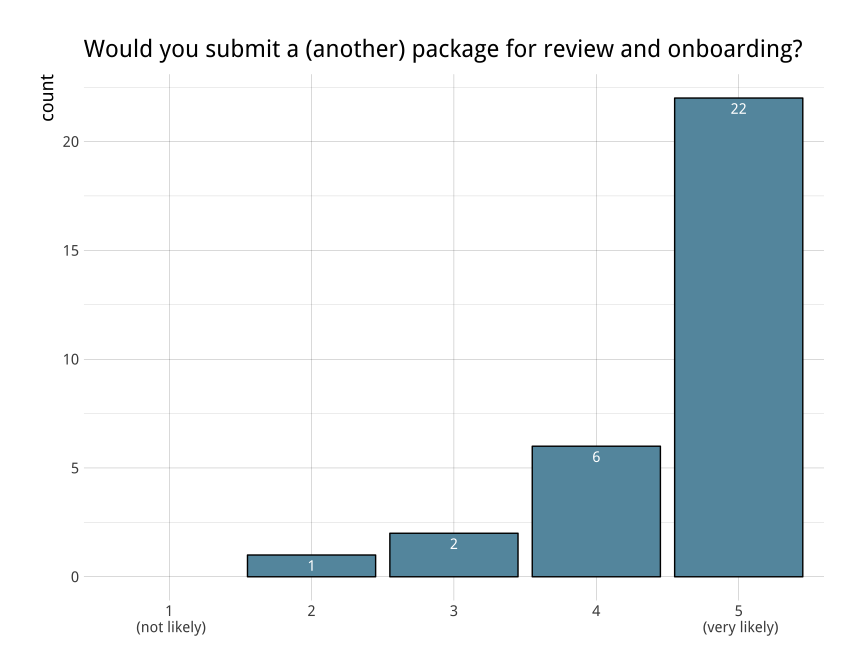
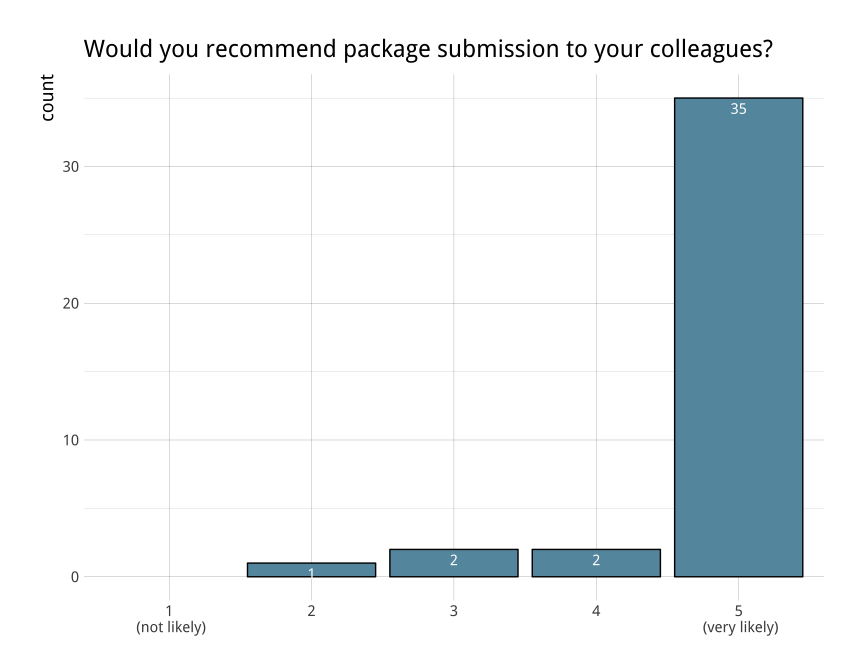
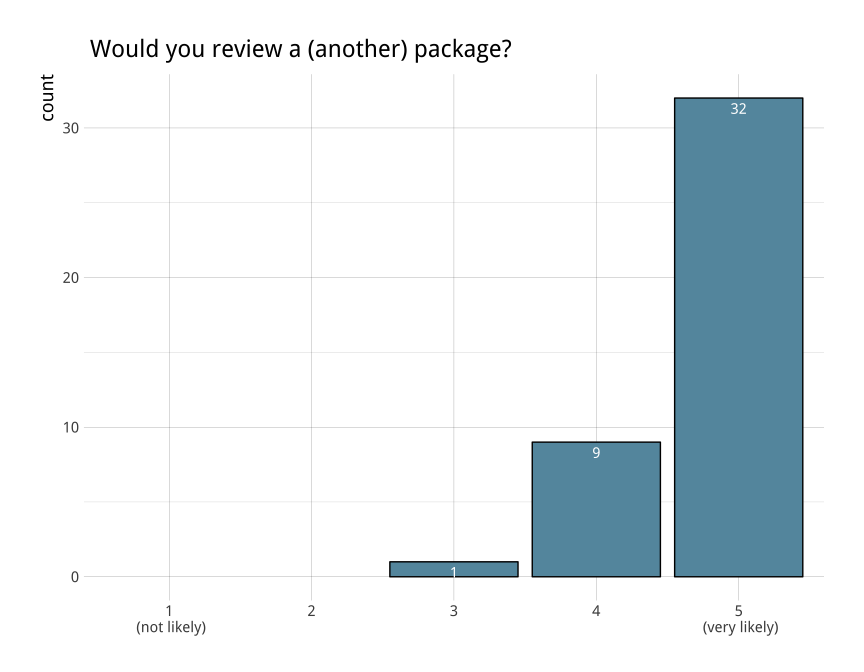
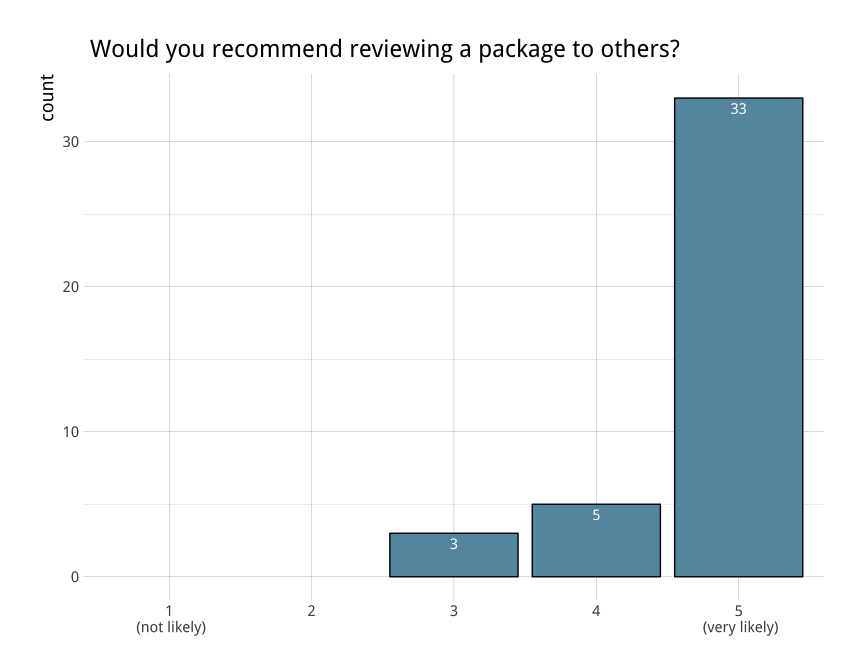
Package authors are given the option to submit directly to the Journal of Open Source Software (JOSS) for publication.
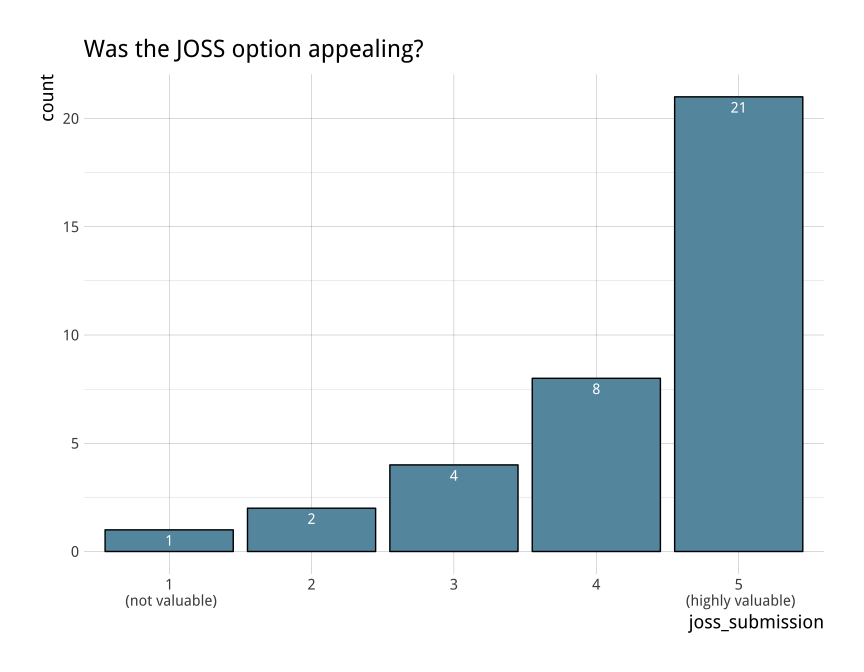
🔗 The good and the bad with onboarding
We asked authors to tell us some of the best and worst attributes of participating in onboarding.
Aspects of onboarding that were challenging?
- Deciding when to submit (see above)
- Package review is quite time consuming.
- Keeping up with ongoing revisions to the package during submission.
- Long time lag between review and revision.
Aspects of onboarding that were great
- The opportunity to network and share ideas.
- The openness and transparency of the entire review process.
- Learning about software design, package development, and improving one’s own coding skills.
- The opportunity to have two thorough code reviews which are quite difficult to get elsewhere.
- The collegial and non-adversarial nature of the process.


🔗 Did blogging post-acceptance have any impact?
At the completion of each review, the editors invite package authors to submit either a long-form blog post aimed at a general reader, or a shorter technical note. Most authors who wrote posts reported greater visibility for their package and some also enjoyed reflecting on the development process.
🔗 Upcoming improvements to onboarding
We’re grateful to all the authors and reviewers that took this survey. The responses have helped us improve our workflow quite a bit and we are excited to roll out several improvements in the coming weeks to months. Here are a few things to look forward to:
- A much improved (bookdown) guide for both package development and package reviewing.
- Improvements to
goodpracticethanks to Mango The Cat’s Hannah Frick and also agoodpracticeAPI down the line. - A new and improved reviewer sign up form that will make it much easier for editors to match reviewers to submissions.
- Suggestions are always welcome even if you missed this round of the survey. Chime in in the issue tracker of our in-progress guide or in this other issue tracker where we keep track of more general questions & suggestions about onboarding.
We hope to see your package or review expertise on the onboarding repo soon!

